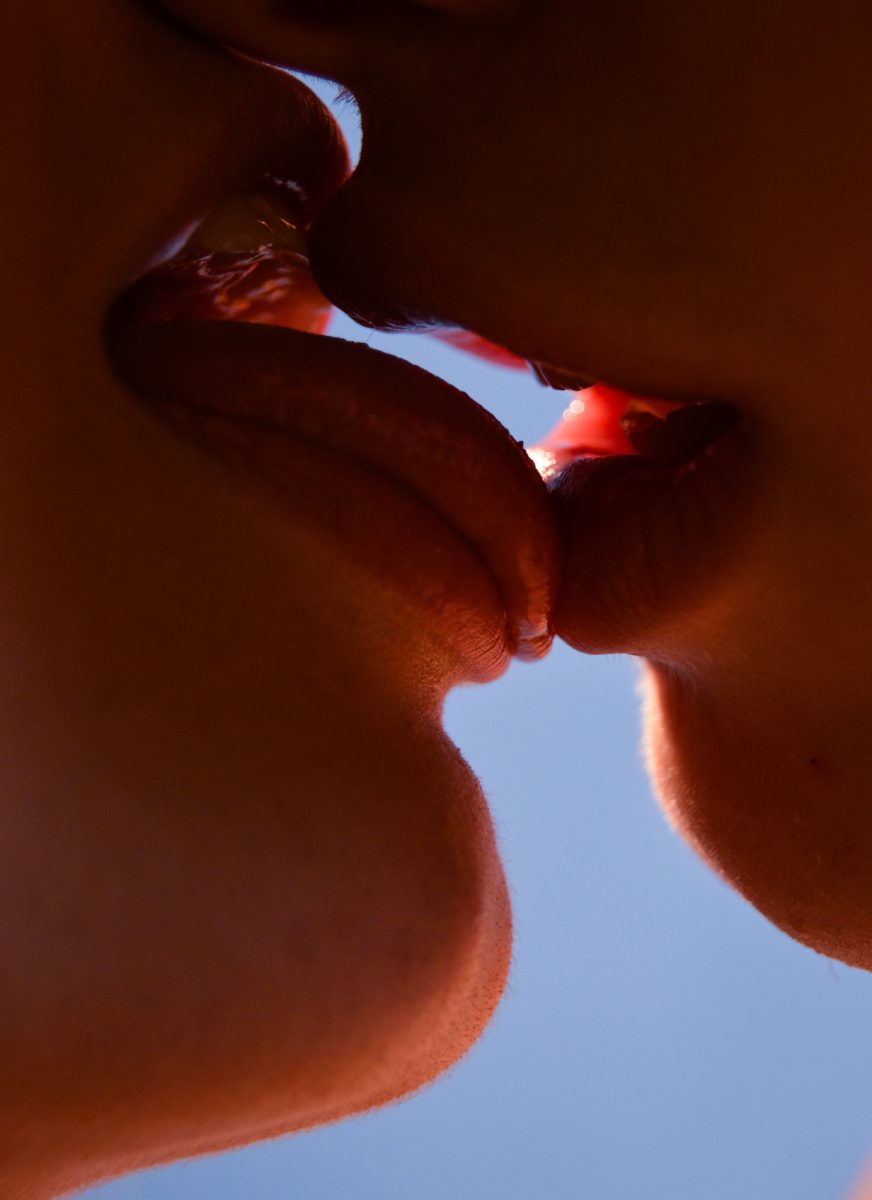
Cum Together
Photo: Mia Harvey via Unsplash
Japanese Lesbian Shunga Revisited
By Anne Sophie Parsons (she/her)
Porn is readily accessible on the internet – the lesbian variety being a mostly frowned upon category amongst queer women for its not all-too realistic portrayal of sex between women. This is not any different for shunga, erotic visual prints produced in Japan centuries ago; impressively large dildos shared between women feature prominently and look more painful than pleasant. But can revisiting these visuals lend a new set of eyes as far as female queer sexual identity goes? Is it possible to reclaim ancient erotica intended for male viewers and transform it into a visualisation of lesbian or female queer desire?
First things first, a brief introduction of descriptive terms is called for: Ukiyo-e – translating as ‘picture[s] of the floating world’ – is a genre of Japanese art which flourished from the 17th through the 19th centuries. Its artists produced woodblock prints and paintings of numerous subjects: kabuki actors and sumo wrestlers, travel scenes and landscapes and – erotica. This latter genre called shunga was – despite what one may believe – popular among a variety of people; erotic prints were bought by both men and women of all classes. Superstitions and customs surrounding shunga suggest as much. In the same way that it was considered a lucky charm against death for a samurai to carry shunga, it was considered a protection against fire in merchant warehouses and the home. From this we can deduce that samurai, merchants, and housewives all owned shunga. All three of these groups would suffer separation from the opposite sex due to class and social norms – and here enters the question of homosexuality and depictions of same-sex erotica.
Despite the majority of shunga showing heterosexual copulation, homosexuality also featured – older monks penetrating far younger men with overdimensioned members are more easily found than fair-skinned females enjoying the throes of passion together. While not the most popular category, sex between women was depicted in select prints – the fascination of penetration again being the focus: double-ended dildos (known as taigaitata) are used in creative and carnal ways with lubricant and lustful abandon and even a tengu mask – which you might know as the little ‘red mask with a long nose’-emoji – as a strap-on. You cannot say that isn’t an inventive way to go about screwing…
Then – are we to assume that the prints were produced with heterosexual males in mind and solely to cater to male fantasies?
Intended for whose eyes?
The question of representation of authentic lesbian or queer female sexual desire is, perhaps surprisingly, not that straightforward. Recently it has been explored in Meredith Keukelaar’s (She/Her) thesis “The Impact of the Male Gaze: Femininity and Female Sexuality in Shunga Prints of the Edo Period” from 2022. Take for instance Katsushika Hokusai’s illustration for the book Manpuku Wagōjin (Gods of Myriad Conjugal Delights, 1821), where two women make love with no sex toy involved. A third woman spies on the action from outside the room, pleasuring herself to the sound of the couple:
“While one could argue that the woman listening in is meant to be a stand in for a male viewer, it seems far more likely that this was an image that would have easily been consumed by women who could put themselves in her place instead.” (Keukelaar, p. 58)
Through the distinct idea of a potential lesbian gaze, the possibility of women searching for and being attracted to prints of female homosexual erotica seems an opening door – both to the past, years and years ago to the Edo period, but also all the way up to modern times:
“When women who are attracted to other women view or create works that are normally impacted by the male gaze, a paradoxical shift can occur, where ‘the assumed power of the male gaze is dislocated or rather played back on itself, and a space is opened up to include the potential for a lesbian gaze.’ This idea […] alters not only the way that we can imagine female homosexuals in Edo Japan would have viewed [these specific prints], but also how they may have approached similar work by male artists.”
By imagining female same-sex shunga erotica as a means to dismantle the straight male gaze and reimagine it as a doorway into a clandestine, non-exploitative ‘floating world’ of lesbian delight on women’s own terms, same-sex female desire blossoms as a possible way to live, to love, to lust – in the past but just as much in a modern setting. Exactly as the scene playing out in Hokusai’s portrayal, a modern queer woman may imagine herself with half-closed sultry eyes partaking in the scenario that embraces and underlines her innate desires; receiving sexual pleasure from the private consummation between two other women. Not necessarily as a voyeur, but as emotional and physical masturbation hinged on sexual identity – lesbianism as a shared, safe and sought-after experience, away from unwanted prying eyes.
Truly – coming and cumming together, in both understandings of the word.
Thesis cited:
“The Impact of the Male Gaze: Femininity and Female Sexuality in Shunga Prints of the Edo Period” © 2022, Meredith Keukelaar, Lindenwood University



